Learn
Impact of the American Revolution
During the Revolutionary period, American colonists were affected by a variety of changes. They ranged from the very dramatic change of government British rule to American rule to the more subtle changes in religious freedom.
We declared our independence based on principles from Enlightenment philosophers. These principles were solidified to the world with the surrender at Yorktown and the Treaty of Paris that followed almost two years later.
Treaty of Paris 1783
The most outstanding effect of the Treaty of Paris and the Revolution, both in America and throughout European nations, was the spread of the ideas of liberty, rights of citizens, and democracy.
Benjamin Franklin along with John Jay and John Adams were the American delegates sent to negotiate a peace treaty with Britain.
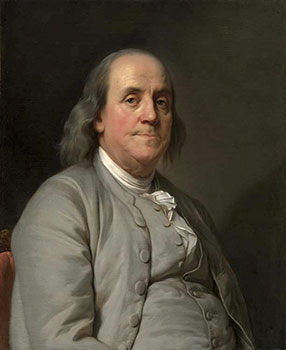
Peace negotiations were complicated because there were four countries involved: the United States, Great Britain, France, and Spain.
The final peace settlement, the Treaty of Paris 1783, was signed September 3, 1783, almost two years after the surrender of Cornwallis at Yorktown.
Read Yorktown and the Treaty of Paris to learn more details about the terms of the treaty.
Provisions of the Treaty of Paris
- American Independence was recognized by Great Britain.
- The U.S./Canadian border was set along the Great Lakes from New England to the Mississippi River.
- The boundary between U.S. and Spanish territory was set as the Mississippi River.
- The Florida and U.S. border was set and Florida was returned to Spain.
- Great Britain agreed to withdraw troops from U.S. territory.
- Congress promised to recommend to the states that Loyalists have their property and rights restored. They also recommended that no further punishment be taken against them.
Territory Gained

Political Impact
The Revolutionary period was truly a time of great change on a number of levels for the colonists in America. Political ideas, generated by Enlightenment thinkers, influenced the way Americans approached government. Ideas regarding equality and liberty spread to European countries like France. Some foreign leaders of the revolution, like Lafayette, would promote these ideas in their home countries in Europe.
Several of the key figures in the Revolutionary War went on to have successful careers in politics. For example, Henry Knox became the first Secretary of War for the United States and Lord Cornwallis became Governor General of India.

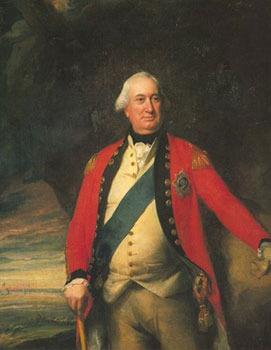
Societal Impact
While major political changes occurred, some very important social changes took place, as well, for various groups during the American Revolution.
The idea of equality for all people was promoted as a worthwhile goal even though most members of the Continental Congress probably had no intention of applying this idea to people other than white men Only white men who owned property were eligible to vote. .
Collectively, the political and social changes during the Revolutionary period laid the foundation for the ideals of the future United States government.
Impact on Women
Women did not gain any immediate power or political rights in the aftermath of the American Revolution. However, women were left in charge of running the farms, businesses, and family while the men were off at war. Also, women and children followed the armies of both sides during the war, helping as cooks and nurses and keeping the families of soldiers together.
These experiences challenged beliefs concerning the traditional roles of women. New roles did emerge that gave them more status within the family and as contributors in the market economy of the household. For example, the increasing concentration of women in New England led to the use of female laborers in the textile mills.
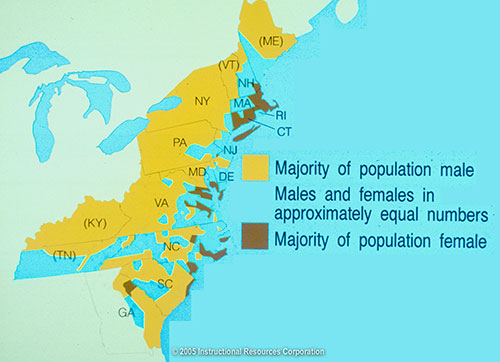
"Ratio of males to females in early Republic, 1790." Discovery Education, IRC, 2005, app.discoveryeducation.com/learn/player/980c8611-b1c0-4459-a63f-fe9e62d2c74b.
Education was easier for women to attain after the war, as most felt that "educated mothers" would be better suited to the new-found republic. The rise of "Republican Motherhood" enhanced their role as teachers within the family, which led to better opportunities for education. You can read more about Republican Motherhood here.
In addition, women such as Abigail Adams started to push for greater rights for women and enslaved persons.

Impact on African Americans
Did you know that 5,000 African American soldiers fought alongside the colonists? By 1770, 1/20 or 5% of Washington's soldiers were African American. In many cases, Black Patriot soldiers were free or enslaved African American men who served in predominantly white units of the Continental Army. However, there were also Black Loyalists, African American men who escaped from their Patriot masters to serve on the Loyalist side because of England's promises of freedom.
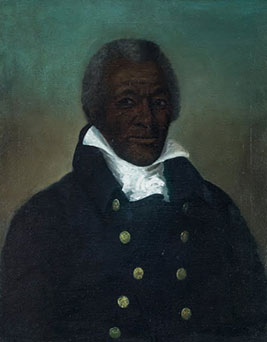
The American Revolution caused the antislavery abolitionist movement to grow in the North. Slavery was prohibited in many states during the late 1700s and early 1800s.
On the other hand, slavery in the South became more restrictive, drawing a definite division that would later separate the nation. Laws throughout the country were passed severely limiting the rights and political power of free African Americans.
The issue of slavery divided the delegates at the Second Continental Congress.
Read The Impact of Slavery to learn more about the societal impact of the American Revolution on African Americans.
Impact on Native Americans
The war had a disastrous effect on Native Americans. Many Americans would use the fact that Native American tribes had sided with the British during the war as an excuse to persecute them after the war. Cherokees, Shawnees, and other southern and western tribes were attacked for decades due to their support of the British.
Read Stories from the Revolution: American Indians and the American Revolution to learn more about how the American Revolution affected Native Americans.
The Iroquois League in New York was destroyed and the tribes were pushed out of the state.
Read Revolutionary Limits: Native Americans to learn more about the impact of the American Revolution on the Iroquois and other Native American tribes.
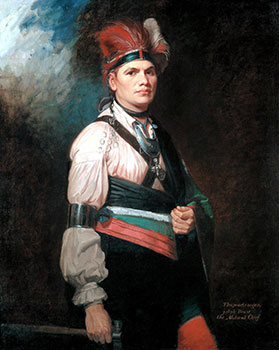
Additional Resources
Explore the links below to learn even more about the impact of the American Revolution.